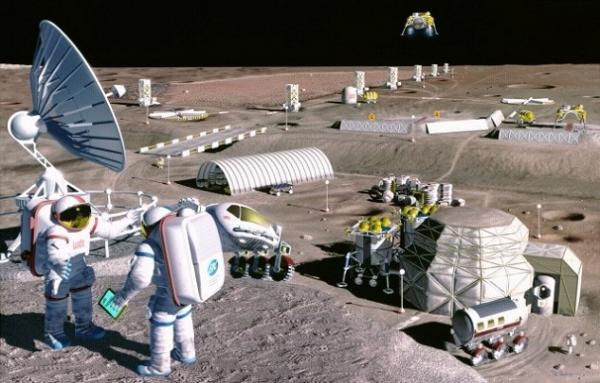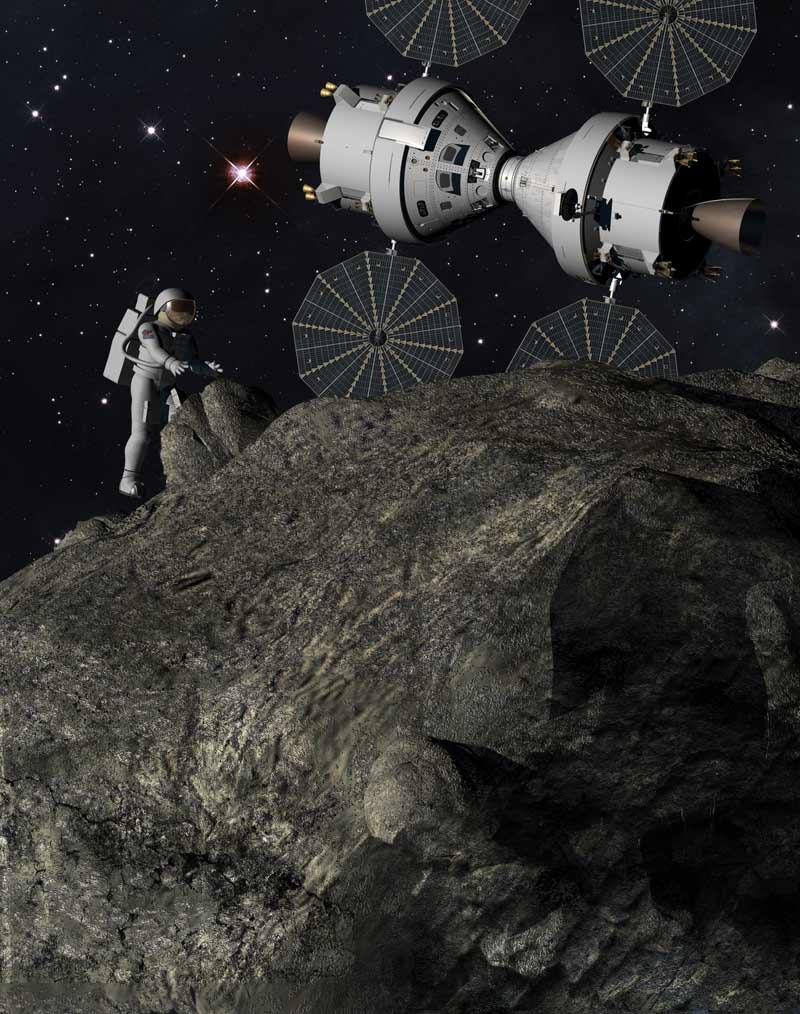Moon or Asteroid? NASA's Next Giant Leap Depends on Who'll Be President

The United States may start working toward establishing a moon colony by 2020, or an asteroid may remain the next target for manned exploration; it depends on who wins this November's presidential election.
America's space policy tends to change on four- or eight-year cycles, often shifting dramatically when a new commander-in-chief is sworn in. With the next election less than 10 months away, it appears that incumbent Democrat Barack Obama will take on one of two Republicans — former Massachusetts Governor Mitt Romney or former Speaker of the House Newt Gingrich. Romney and Gingrich are currently leading the Republican primaries, ahead of Rick Santorum and Ron Paul.
Here's a brief look at the vision the president and each of the two Republican frontrunners have professed for NASA and the nation's space activities.
Barack Obama: The status quo
President Obama announced his adminstration's space policy in 2010, one year after taking office. The plan called for a radical change in direction for NASA. [50 Years of Presidential Space Visions]
Obama cancelled George W. Bush's Constellation program, which had instructed NASA to return astronauts to the moon by 2020. Instead, Obama directed the space agency to focus on getting humans to an asteroid by 2025, then on to Mars by the mid-2030s.
The president's vision entails, in part, the development of a new heavy-lift rocket. In response, NASA has begun working on a booster called the Space Launch System, which it hopes will be operational by late 2021.
Breaking space news, the latest updates on rocket launches, skywatching events and more!
Obama's policy also seeks to jump-start commercial spaceflight capabilitites. Since the space-shuttle fleet was grounded last year, NASA has relied on Russian Soyuz vehicles to ferry astronauts to and from the International Space Station.
But over the long haul, Obama wants private American spaceships to take over this taxi role. So the president promised NASA an extra $6 billion over five years, which the agency would use to help companies develop these new craft.
NASA has said it hopes some of these commercial vehicles will be up and running by 2017 or so.
Newt Gingrich: Grand plans
Newt Gingrich has big ideas for American spaceflight, which he laid out in a speech Wednesday (Jan. 25) on Florida's Space Coast.
The self-professed space geek said that, if elected president, he would push for a permanent manned lunar colony by 2020. He also wants a bustling commercial spaceflight industry by that year, as well as a next-generation propulsion system capable of sending astronauts to Mars quickly and efficiently.
But Gingrich wouldn't count on NASA to make all of this happen. Instead, he would look to develop the capabilities of private industry by establishing a system of cash prizes. As an example, he said he'd propose a $10-billion prize for the first company or entity to get a human to Mars.
"You put up a bunch of interesting prizes, you're going to have so many people showing up who want to fly, it's going to be unbelievable," Gingrich said. "So the model I want us to build is largely the model of the '20s and '30s, when the government was actively encouraging development [in the aviation industry], but the government wasn't doing it."
Gingrich announced he would set aside 10 percent of NASA's budget to help fund these prizes. He seems keen to cut the space agency's funding overall, saying repeatedly that he wants NASA to be "leaner" and less bureaucratic.
Mitt Romney: Steering NASA by committee
Mitt Romney hasn't been as voluble on space policy as Gingrich, but he shares his Republican rival's desire to shift more of the spaceflight burden from NASA to private industry.
In fact, Romney wants the business community to help chart NASA's course and provide part of its funding. At a Republican primary debate in Florida on Monday (Jan. 23), he suggested that leaders from the private sector, academia and the military should work together with the president and NASA officials to map out the nation's space activities.
"Bring them together, discuss a wide range of options for NASA, and then have NASA not just funded by the federal government but also by commercial enterprises," Romney said. "Let's have a collaborative effort, with business, with government, with the military as well as with our educational institutions."
Compared with a Gingrich presidency, a Romney administration would likely place less weight on exploring and exploiting the final frontier. However, the former Massachusetts governor has said that he views space exploration as a priority.
We need to "have a mission, once again excite our young people about the potential of space, and the commercial potential will pay for itself down the road," Romney said.
Calling all visionairies
These presidential hopefuls are following in the footsteps of past leaders by declaring sweeping visions for our nation's space program. Most famously, John F. Kennedy said on May 25, 1961, "I believe that this nation should commit itself to achieving the goal, before this decade is out, of landing a man on the moon and returning him safely to the Earth."
Those words prompted a countrywide push to carry out the Apollo program, culminating in the landing of Neil Armstrong and Buzz Aldrin on the moon in 1969.
Ever since, leaders have been trying to reproduce the Kennedy effect.
"I have been puzzled for years by a statement that goes something like, 'If we just had a president with the vision and foresight of John F. Kennedy to announce a bold space initiative, all would be well with NASA,'" said Roger Launius, space history curator at the Smithsonian's National Air and Space Museum in Washington, D.C.
The problem is that Apollo succeeded because of the very specific political, technological and economic environment of the time, Launius said. It's not necessarily for a lack of vision that NASA hasn't quite reached those heights since.
"We have had those national leaders who made those bold proclamations," Launius told SPACE.com in an email. "Twenty years to the day after the Apollo 11 landing, President George H.W. Bush made another Kennedy-like speech announcing the ambitious Space Exploration Initiative (SEI) that was intended to return people to the moon by 2000, establish a lunar base, and then, using the space station and the moon, reach Mars by 2010. The price tag for this effort was estimated at a whopping $400 billion over two decades and the initiative never gained traction in Congress or with the American people."
That president's son tried again 15 years later.
"On January 14, 2004, President George W. Bush performed essentially a reenactment of his father by announcing a 'Vision for Space Exploration' that called for humans to reach the moon and Mars during the next thirty years. It did not gain much political or funding support either," said Launius.
Whether Obama's, Gingrich's, or Romney's plans will succeed remains to be seen.
SPACE.com assistant managing editor Clara Moskowitz contributed to this report. You can follow SPACE.com senior writer Mike Wall on Twitter: @michaeldwall. Follow SPACE.com for the latest in space science and exploration news on Twitter @Spacedotcom and on Facebook.

Michael Wall is a Senior Space Writer with Space.com and joined the team in 2010. He primarily covers exoplanets, spaceflight and military space, but has been known to dabble in the space art beat. His book about the search for alien life, "Out There," was published on Nov. 13, 2018. Before becoming a science writer, Michael worked as a herpetologist and wildlife biologist. He has a Ph.D. in evolutionary biology from the University of Sydney, Australia, a bachelor's degree from the University of Arizona, and a graduate certificate in science writing from the University of California, Santa Cruz. To find out what his latest project is, you can follow Michael on Twitter.


